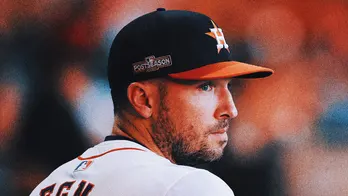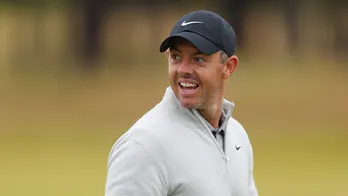The tricky junior to pro transition in tennis - what India’s top players advise
Competing in the Junior Davis Cup Finals that concluded on Sunday, India finished 14th losing all but one match against Mexico. The Indian boys qualified for the elite 16-nation competition as winners of the Asia-Oceania competition at home earlier this year.  PREMIUM
PREMIUM
For the team comprising Rushil Khosla (aged 16), Vansh Nandal (15) and Kriish Tyagi (15), the considerable step up in Turkey presented a stiff challenge. A bigger leap though awaits them in the form of the junior-to-professional progression path.
“It’s the same as jumping one level to the next. Except, it’s a much bigger jump,” Prajnesh Gunneswaran, the last Indian singles player in the top 100, said.
A lot of Indian youngsters tend to stumble in that jump, either taking it too early, too late or with misdirected steps.
Is there, therefore, a template in terms of the right time and career stage for juniors to take the pro plunge in the Indian tennis sphere, which is vastly different from Europe (abundance of tournaments, options) and USA (thriving collegiate circuit)?
“There’s no textbook way,” Yuki Bhambri, the former junior world No 1 and Grand Slam champion, said. “The transition was easier for me because I had early success in juniors.
"The goal is always to do well in the pros. So by the time I was 16-17, I was playing a few pro events, Futures and Challengers in India. By then, one should at least start playing a few events and once your junior career progresses and you see where you are, you take the senior plunge depending on that.”
There are two contrasting schools of thought among Indian coaches vis-a-vis the switch: one is to keep playing juniors till the player finds his/her feet at the next level, the other is to not swim too long and too deep in the junior pool irrespective of how well one is floating.
“In India especially, people tend to go to the extreme one way or the other; it’s either let’s just keep playing juniors till pretty much you can’t play anymore, or skip it altogether and play the pros. For me, the right approach is to continue to play the juniors, see where you progress as well as keep improving with one eye on being on the pro tour,” Bhambri, who reached a career-high 83 in singles, said.
“At the end of the day, you have to be winning and learning how to win at some level,” Prajnesh said of the conundrum. “Losing all the time does not help. You need those positive reinforcements while trying to adjust to the higher level. So if you’re not winning at the pro level, you can mix the juniors and make sure you don’t get bogged down.”
The college route
Somdev Devvarman did win early at the pro level—a Futures tournament in India in 2004 as he turned 19. However, “reality hit me hard” after earning a little over $1000 for it.
“Once I did the math, I realised it was going to cost a lot of money and take a lot of time,” Devvarman, India’s highest-ranked men’s singles player since the turn of the century, said. “If you’re a young player without a coach at Futures, it’s impossible to make money and harder to improve.”
And so Devvarman set out on a route many Indian youngsters have been hesitant to explore lately: collegiate tennis in the US. In his four years at the University of Virginia, he became a two-time NCAA singles champion “developing my game tremendously from freshman to senior”.
“It played a very important role in my development,” the former world No 62 said. “For the first time, I felt no pressure, even financially. I didn’t have to worry about where am I getting my shoes from, my racquets from, how am I paying my coaches, do I have the right coaches around me, am I in the right environment to improve in all the different facets, if I got injured how will I deal with it. These are things that are hard to do alone.”
For Devvarman, it’s “either the college route or pro route, really” and it is baffling why more budding Indian players don’t land up to the former.
“I’ve heard some people complain that they don’t want to study. That’s a weak excuse,” he said. “I feel like players, parents and coaches are a little short-sighted in India. To think big picture, I thought college was a straightforward answer.”
Rubbing shoulders and playing against the likes of Benjamin Becker, Kevin Anderson and John Isner at NCAA also made Devvarman’s shift to pro a lot smoother. “I’d seen Anderson go pro after his third year, saw Isner go pro after he finished at Georgia, and I saw them have a good amount of success. So the belief factor became a lot more. You immediately felt that you could do it too,” he said.
An 18-year-old Prajnesh too spent one year at University of Tennessee after playing a couple of Futures and being sidelined with injury. Unfortunately for him, after he quit college and returned to the pro circuit, his troubled knee kept him out for close to five years.
“I just didn’t play enough when I was younger,” Prajnesh, 32, said. “The older you get, the more stubborn you get and it’s difficult to change then. In a way, I limited my exposure to different styles because I didn’t play enough.”
That, in essence, is the key to the tricky junior-pro transition. And, some “honest” advice.
"The kids can keep testing themselves, and coaches should encourage the kids to play. Pro is where you want to be, but juniors is where you are learning how to fight, play matches, compete under pressure. All that helps in the long run," Bhambri said.
“If you wanted to go pro as a junior, the signs would be incredibly clear very early on that you have the talent to do so—if you’re honest with yourself and people around you are honest,” Devvarman said. “Otherwise, the pro tour will be a hard place for you to make the transition from 700-900 (ranking) in the world to at least playing qualifiers in the Slams.”
Experience unrestricted digital access with HT Premium
Explore amazing offers on HT + Economist Start 14 Days Free Trial Already Subscribed? Sign In
Disclaimer: The copyright of this article belongs to the original author. Reposting this article is solely for the purpose of information dissemination and does not constitute any investment advice. If there is any infringement, please contact us immediately. We will make corrections or deletions as necessary. Thank you.







